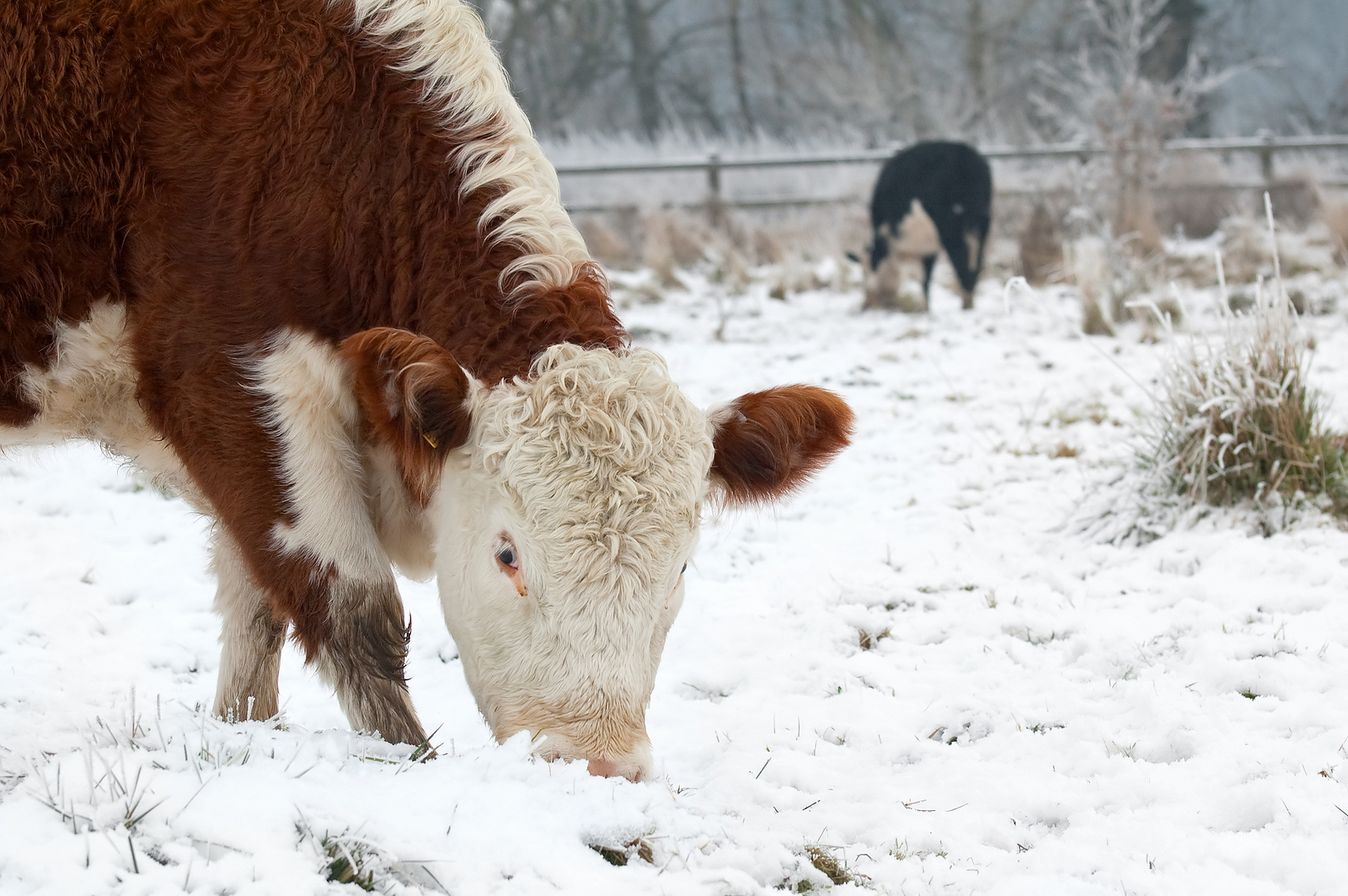Cold Weather Care for Pets & Livestock

Even if an animal spends it’s life outside, certainly doesn’t exempt it from needing a little extra care! Now that we’ve moved into colder weather, it is time to start thinking about how it will affect our animals. Both the large animals and small animals have some things to take into consideration when preparing for winter – shelter/protection from weather, food and water sources, and ice/slipping.
Read more: Cold Weather Care for Pets & LivestockShelter
One of the most important requirements for any animal is shelter. For many of our cats and dogs, that would be our house! When it comes to outdoor pets – cattle, horses, and other large animals – that shelter can vary a bit more. With any species, especially during the winter, it is important to have a solid structure that the animal can get into to get away from wind and snow. Cats and dogs need a small, insulated house where they can get in and get warmed up. Cattle typically have a thick enough winter coat, so it’s best practice to provide at least a 3-sided structure to get in out of the wind and away from the snow (when they want to anyway). When it comes to horses, having a sufficient shelter is more than enough protection from the cold and snow; typically no extra blanketing is needed unless they have underlying health problems.
Hydration
Food and water is another big item to take into consideration for winter. Our indoor pets aren’t really going to be affected, but any outdoor animals can be. First and foremost, a consistent water source is VERY important. Tank heaters for large animals and heated water bowls are life savers during the winter, both for the animal and the human taking care of them. Even when there is snow on the ground, animals can become dehydrated quite easily. Most animals are going to use snow as a last resort for a water supply – eating/melting snow uses a lot of energy and body heat. Lack of a water source can result in dehydration and death. As far as food goes, there are not necessarily a lot of changes that need to be made other than making sure that it is still easy to access (not covered in snow or ice) and when it is extremely cold, an increase in forage for the large animals to help them keep warm can be beneficial. Most small animals with adequate shelter don’t need any food changes, but if it is extremely cold for prolonged times, they may need an increase in calories, but this will be different between individual pets.
Safety
Ice and slipping hazards are always a problem at some point during the winter. For our pets especially, it is important to protect those pads as it is easy for them to get cuts on pads from ice and melted snow that has re-frozen. Good footing for any species is a must – with our large animals, this is a lot harder to achieve and the best solution will depend upon the housing of the animal. Breaking large ice chunks up, animal-safe ice melt, and keeping them away from slick areas when possible are all good options.
When salt and other de-icing products are being used due to weather, use a pet-safe formula in instances that you can control. Although we can’t control what is used everywhere, there are some easy precautions to help ensure that your pet does not get a burn from the salt or upset stomach licking the salt from their paws. Winter dog boots are a great option – these can protect from both the cold and the salt. Other alternatives include avoiding areas that are salted, or if the pet is only exposed to a small amount of salt, washing paws as soon as they come back inside. When we get some of those bitterly cold, snowy days, remember to add some extra protection to feet, such as the winter dog boots or other covering – paws, especially small ones, can get too cold in a hurry.
In conclusion, this winter make sure you are prepared for bad weather! Whether you have large animals, small animals, or both, there are many different things to consider and prepare for. Please take a minute and make sure you are ready for the ice and snow before it gets here!
